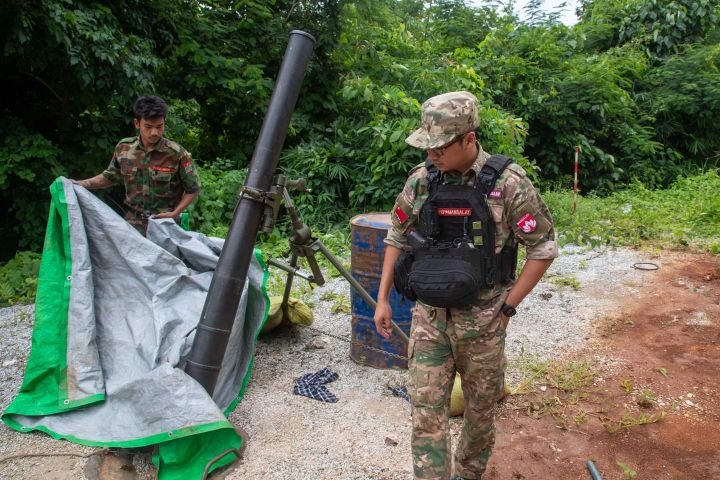
Advancements in AI have significantly transformed the fields of robotics and automation, leading to smarter, more efficient, and versatile systems. Here are some key developments and trends in robotics and automation driven by AI:
### 1. **Autonomous Navigation**- **Self-Driving Vehicles**: AI algorithms, particularly those utilizing deep learning and computer vision, have enabled the development of autonomous vehicles.










These vehicles can perceive their environment, make real-time decisions, and navigate complex settings, all while ensuring safety and efficiency.
– **Drones**: AI-powered drones are used for various applications, including logistics, agriculture, and search-and-rescue missions. Advanced navigation algorithms allow for autonomous flight and obstacle avoidance.
### 2. **Human-Robot Interaction (HRI)**
– **Collaborative Robots (Cobots)**: Cobots are designed to work alongside humans in a shared workspace. AI allows these robots to understand human intent and safely interact with them, adapting to their movements and tasks.
– **Natural Language Processing**: Robots equipped with NLP capabilities can understand and respond to voice commands, making human-robot interactions more intuitive and accessible.
### 3. **Computer Vision**
– **Object Recognition**: AI-enhanced computer vision allows robots to identify, classify, and manipulate objects in their environment. This capability is critical for tasks like picking, packing, and sorting in warehouses and factories.
– **Quality Control**: AI-driven vision systems can inspect products on assembly lines, detecting defects with a high degree of accuracy, improving quality control processes.
### 4. **Reinforcement Learning in Robotics**
– **Adaptive Learning**: Robots using reinforcement learning can improve their performance over time by learning from their experiences in real-world environments. This allows robots to master complex tasks without explicit programming.
– **Robotic Manipulation**: Reinforcement learning enables robots to refine their grasping and manipulation skills, learning how to handle a variety of objects by experimenting with different approaches.
### 5. **Swarm Robotics**
– **Collective Behavior**: Inspired by biological systems (like ant colonies or flocks of birds), swarm robotics involves multiple robots working together to solve problems. AI strategies help these robots communicate and coordinate their actions autonomously.
– **Applications**: Swarm robotics can be applied in areas such as agriculture (for crop monitoring), exploration (like search missions in hazardous environments), and environmental monitoring (tracking wildlife or assessing natural disasters).
### 6. **Robustness and Adaptability**
– **Resilience to Changes**: AI algorithms enhance robots’ ability to adapt to changing environments and unforeseen circumstances. This resilience is particularly important in dynamic settings, such as disaster response or construction sites.
– **Real-Time Decision Making**: AI enables robots to make complex decisions in real-time, allowing them to navigate dynamic environments effectively and respond to new challenges as they arise.
### 7. **Predictive Maintenance**
– **Condition Monitoring**: AI-powered robots and systems can predict when machines are likely to fail by analyzing sensor data and operating conditions. This proactive approach to maintenance helps reduce downtime and operational costs.
– **Data Analytics**: Advanced algorithms analyze patterns in data, helping businesses maintain their robotic systems optimally and adjust operations based on predictive insights.
### 8. **AI-Driven Automation Software**
– **Robotic Process Automation (RPA)**: Automated software bots powered by AI can handle repetitive tasks across different applications, such as data entry, processing invoices, and more. This streamlines workflows and boosts productivity.
– **Integration of AI with IoT**: The convergence of AI with the Internet of Things (IoT) enables smarter automation. For example, factories can use AI to analyze data collected from sensors on the production line, optimizing processes for efficiency and quality.
### 9. **Telepresence and Remote Operation**
– **Teleoperated Robots**: AI enhances telepresence robots, allowing remote operators to control robots over long distances, which is particularly useful in hazardous situations like search-and-rescue or remote surgery.
– **Augmented Reality (AR) Interfaces**: Combining AI with AR helps operators visualize robotic tasks and interact with robots more effectively during remote operations.
### 10. **Social and Domestic Robots**
– **AI-Enhanced Home Assistants**: Social robots that assist with household tasks, companionship, or even caregiving activities are becoming increasingly sophisticated, using AI to learn user preferences and adapt to individual needs.
– **Education and Therapy**: Robots designed for educational purposes or therapeutic interactions utilize AI to engage users creatively, adaptively facilitating learning and emotional support.
As advancements continue, robots are expected to become even more capable, flexible, and integrated into various sectors, supporting human efforts and enhancing productivity across the board. However, these developments also bring challenges related to workforce displacement, ethical considerations, and the need for regulations to ensure safe and responsible use of robotic technologies.

Leave a Reply